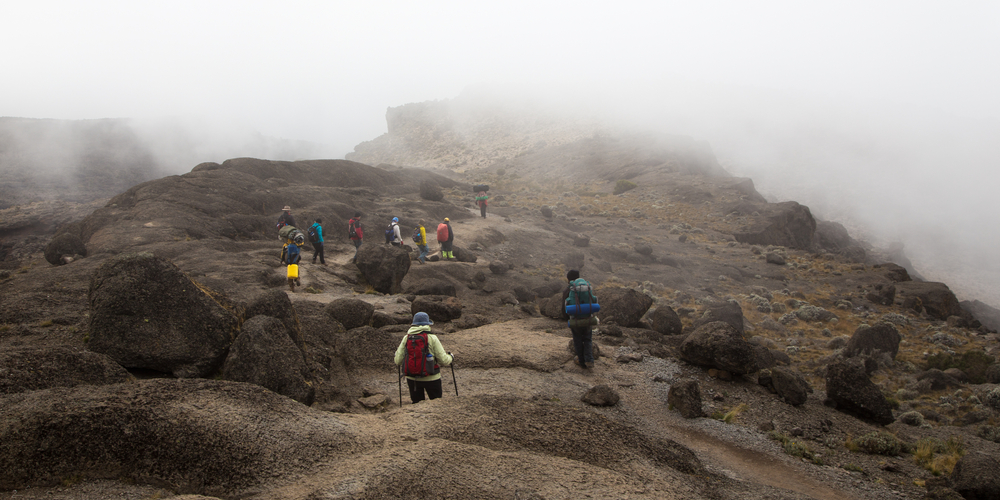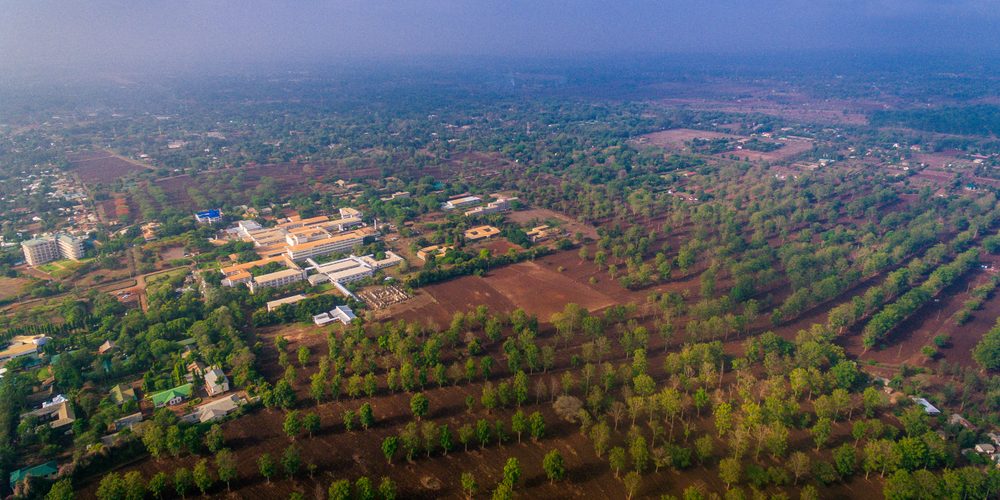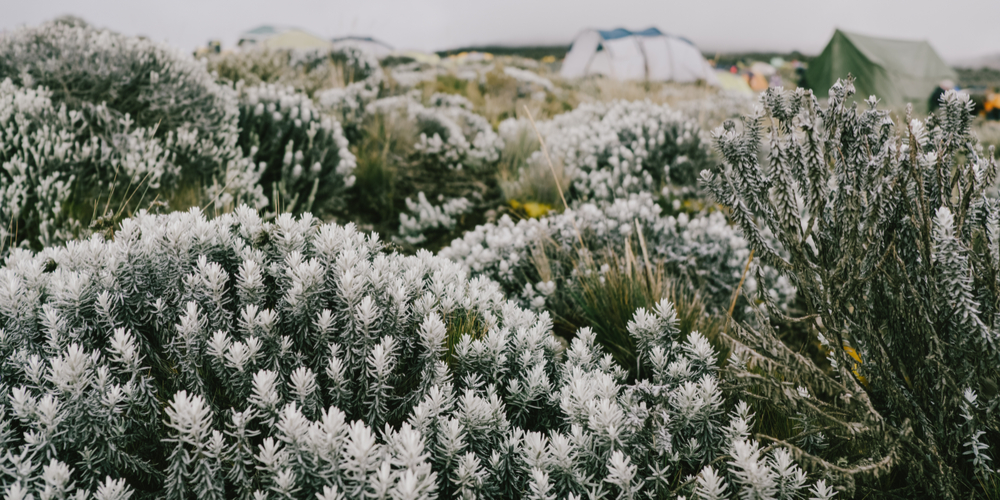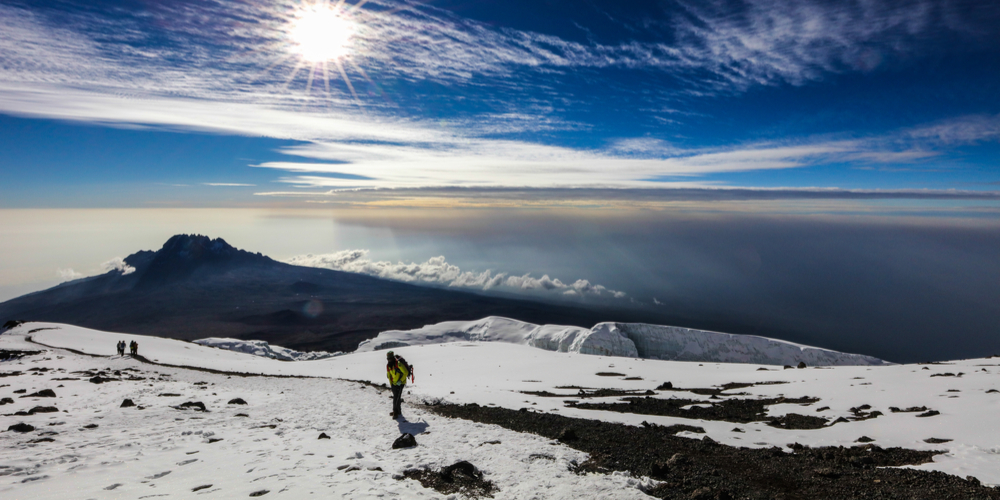Trail Conditions
The paths on the mountain are clearly marked and well maintained by the Kilimanjaro National Park staff, however but the trail conditions change dramatically depending on the ecological climate zone. Walking conditions are challenging and changeable, but relatively easy compared to the other mountains of the seven summits.
No matter which route you climb, you will pass through Kilimanjaro’s various ecological zones.

Mt. Kilimanjaro has five ecological zones: bushland, rainforest, moorland, alpine desert and arctic.
Within each zone there is an association between altitude, rainfall, temperature, plants and animals. The zones occupy belts of approximately 3,281ft (1,000m) of altitude each. In general the temperature falls about 1C for every 6,56ft (200m) increase in altitude, rainfall also decreases steadily with altitude from the forest upward. Plant life is abundant in areas of high temperature and high rainfall. As you climb you will see that plant life decreases due to colder and drier conditions. Wildlife is dependent on plants and because there is less vegetation at higher elevations there are also fewer animals that live at high altitudes.
Bushland / Lower slopes: 2,600ft – 5,900ft (800 – 1,800m)

The first ecological zone on Kilimanjaro and is largely cultivated land with banana, vegetable and coffee plantations. There are many villages inhabited by local tribes who work the land’s rich volcanic soil. The amount of rainfall varies, but increases toward the top of this zone as it nears the rainforest. You will not see large wild animals in the bushland/lower slopes. However, small nocturnal mammals such as the galagos and tree hyrax still thrive, as well as the speckled mousebirds and tropical boubou, are also are plentiful.
Rainforest: 5,900ft – 9,200ft (1,800 – 2,800m)

A band of extremely beautiful forest encircles Mt. Kilimanjaro, typically concealed in thick clouds, protected from the sun and making it difficult for the moisture to evaporate resulting in high humidity. The rainforest is the richest zone on the mountain and although flowers are not plentiful here, those seen are strikingly beautiful. It is home to most of Kilimanjaro’s wildlife, often hidden from view. You are likely to see both blue monkeys, and the black and white Colobus monkeys. Trails here can be very wet, muddy and slippery if there has been heavy rain.
Moorland/Heath Zone: 9,200ft – 13,100ft (2,800 – 4,000m)

This area is referred to as the hybrid zone that transitions from rainforest to alpine desert. The heather and moorland has a cool climate with mist and fog near the rainforest. Heather and heath-like shrubs grow here, as well as gorse-like bushes, attractive grasses and flowers. There are not many large mammals here and those that do visit the moorland are in transit, although eland, dogs, buffalo and elephants have been seen. You may see buzzards, eagles, and the white-necked raven. The trails in this zone are among the best in terms of their easy navigation and firm, steady substrates.
Alpine Desert Zone: 13,100ft – 16,400ft (4,000 – 5,000m)

The lunar like landscape of the alpine desert is much drier with intense radiation, high evaporation and huge daily fluctuations in temperature, nights can be below 0C and in the day time as high as 25C to 35C in direct sun. Under these harsh conditions only the hardiest lichens, moss and tussock grasses survive. This zone does not offer much in the way of wildlife but its views are spectacular. The alpine desert has a mix of good clear paths and challenging sections where you will have to scramble over large rocks such as the Barranco Wall.
Arctic Zone/Summit: 16,400ft – 19,340ft

The arctic conditions of this barren icy land offers little to no rainfall, the sun blazes during the day and is replaced with subzero temperatures at night. This zone receives less than four inches of precipitation per year, usually in the form of snow. Oxygen here is nearly half that at sea level and there is little atmosphere to protect you from the sun’s radiation. Creatures of all sizes are extremely rare here, although a leopard was once found frozen in the snow many years ago. The ascent to the summit, Uhuru Peak, is covered in loose scree which makes trekking difficult.